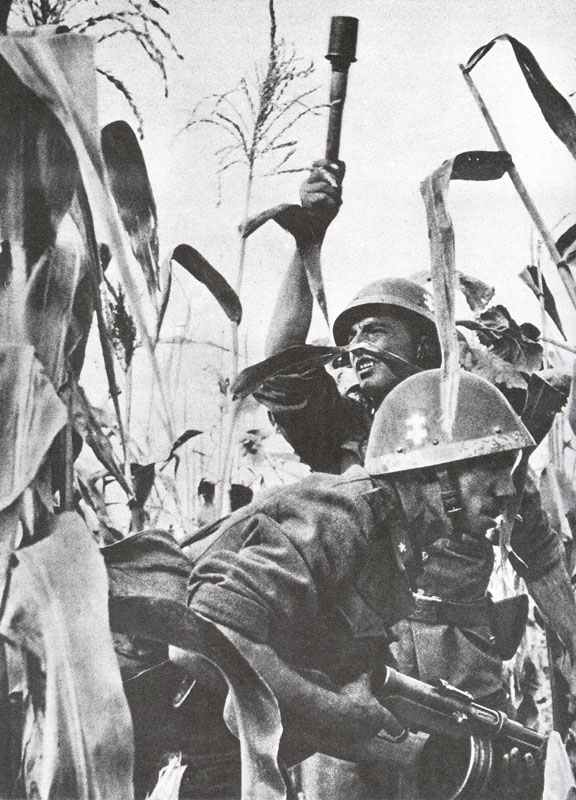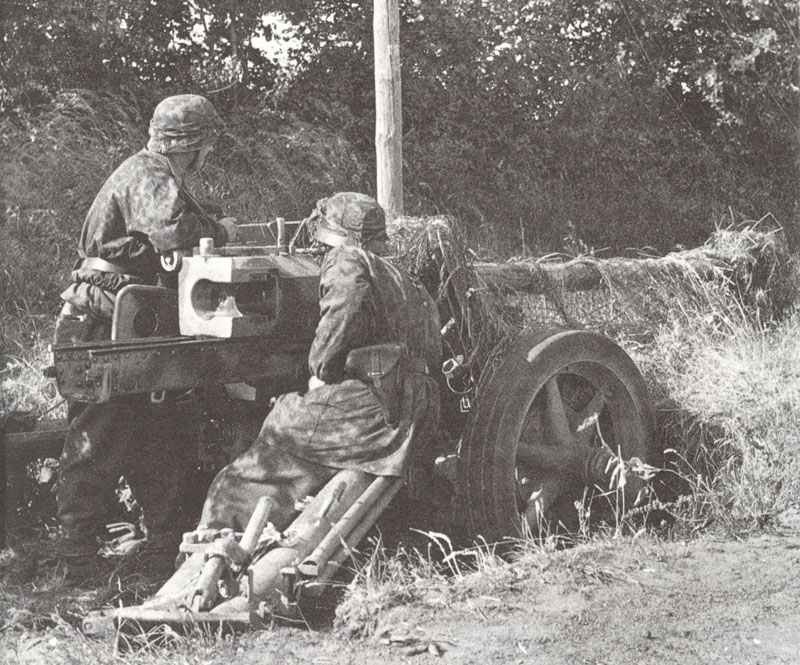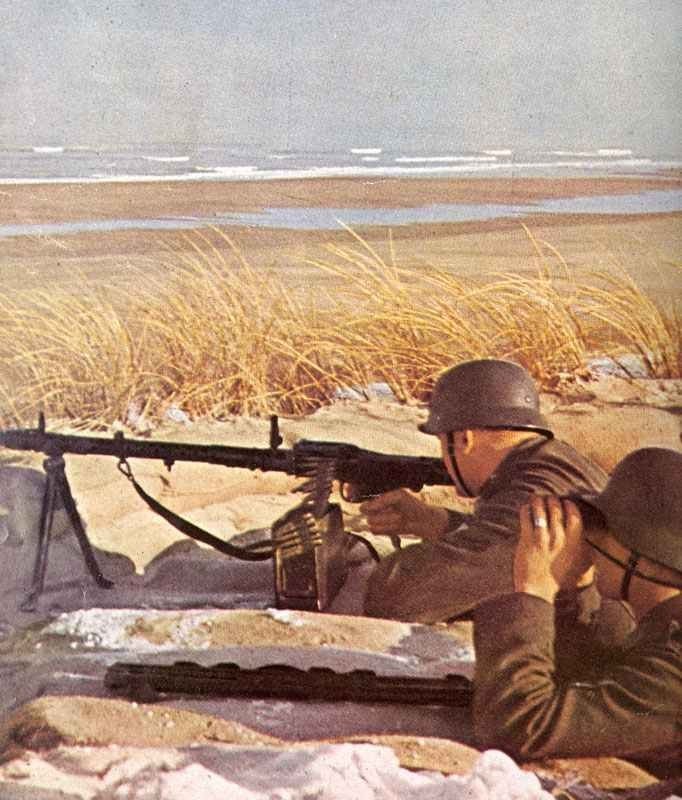Russian Nagant revolvers and Tokarev automatic pistols of the First and Second World Wars.
History, development, specifications, statistics and pictures.
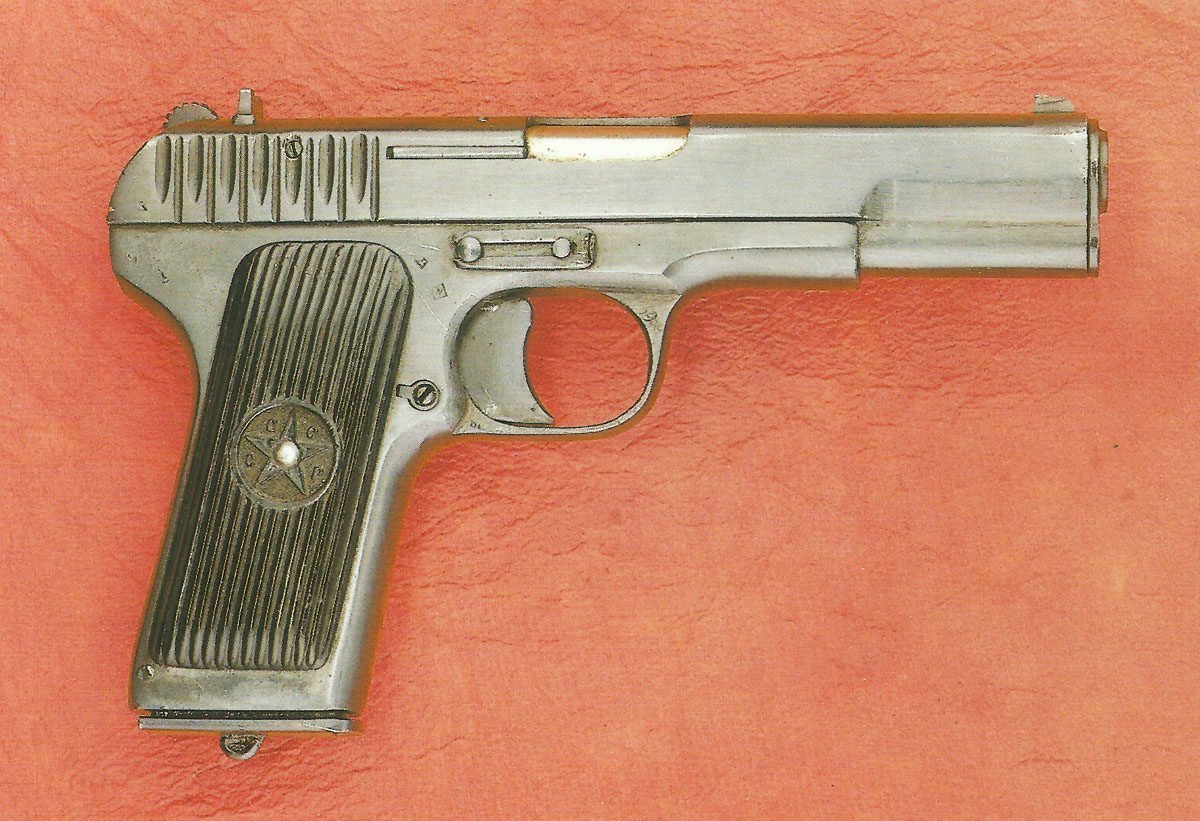
Revolver Model 1895 Nagant
Table of Contents
Model 1895 Nagant
Type: Revolver.
Belgian Nagant Revolver
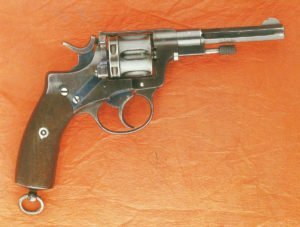
The Nagant Model 1895 revolver was originally a Belgian design that had been produced since 1878. The company Emile et Louis in Liège built modern revolvers for numerous armies in Europe in the eighties and nineties of the 19th century.
The double-action trigger system of the Nagant revolver was based on the invention of the Swiss Schmidt and was used in most revolvers of that time. The Nagant revolver had a rigid frame with a single load after tipping the loading flap behind the drum and ejecting the empty cartridge cases through a rod mounted under the barrel in a rotating bracket.
The models 1883, 1884, 1887 and 1893 differed only slightly. The armies of Belgium and Holland received them in 9.4 mm caliber, the armed forces of Luxembourg, Sweden and Norway in 7.5 mm caliber.
Since then, the basic design has been used in Belgium, Argentina, Brazil, Denmark, Norway, Portugal, Romania and Serbia, with weapons built in Belgium in various calibers. In Sweden, until 1905, 14,000 Nagant m/87 were built under license by the state weapons factory in Husqvarna. Copies of the Belgian Nagant revolver were also made in Spain.
Russian Nagant Revolver
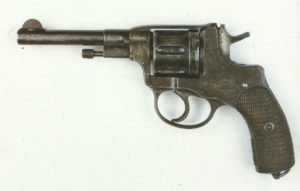
Until 1913 the Nagant revolver was delivered to the Russian Army army by the Belgian company et Leon Nagant in Liège. Construction of the Nagant revolver in Russia began as early as 1901 in the state-owned Tule armaments factory, which were initially built under license. The production there, however, eclipsed all other production, so that the Nagant revolver is now regarded as a Russian weapon.
The first Russian production of the Nagant revolver took place around the turn of the century in the arsenal of Tula and was continued until 1940. This version was the Nagant Model 1895, where the original design of the revolver had been revised to improve overall performance.
It was in many ways an unusual revolver, not least because of the unique 7.62 mm ammunition in a brass cartridge case with a fully countersunk bullet. The drum was pressed against the rear barrel during the shot. The idea was to make the cartridge more efficient by reducing the loss of propellant gas through the small gap between the cylinder and barrel.
This property, however, was of doubtful value as it increased the bullet velocity by only about 50 feet (15 meters) per second, but required a special cartridge. However, the Russians thought much of it and this property was maintained until production was discontinued.
For some reason, the Russian Army of the Tsar decided to emphasize the differences between the ranks by issuing single action revolvers to soldiers, while officers received double action versions.
There was also a distinct, visible difference between the execution of the two models. In the ‘Single Action’ revolvers, the metal was often left blank, while the officers’ version was coated or blued.
However, both versions were extremely robust and reliable weapons, because they had to function under the conditions in which the Russian army normally fought. The frame was stable and the cylinder was fixed, reloading was done through a lockable opening on the right side. A linkage was used to eject used cartridges.
The revolvers of the Nagant Model 1895 were produced over the years to hundreds of thousands and the type was used during World War One and Second World War. In the years from 1914 to 1917 alone, a total of 163,000 revolvers were delivered to the Russian armed forces from the Tule factory. The same Nagant revolver was also used by the Serbian Army during the First World War.
Even today the gun can be found in remote areas of the world and there are still some manufacturers offering ammunition for it.
Soviet Nagant Revolver
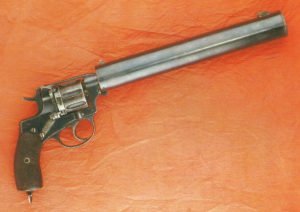
After the end of the Russian civil war the production of the ‘Soviet Revolver Model 1895’ was continued in the arms factory of Tula for the Red Army. The corresponding models can be recognized by an engraved red star.
This model did not differ practically except for the fact that only the double-action trigger system was used.
However, the disadvantage of this weapon was the lengthy loading and unloading of the empty cartridge cases, which was an anachronism during the Second World War. However, the weapon was easily dismantled.
The weapon was mainly carried by officers and non-commissioned officers, but also by specialists such as messengers, wire cable layers and machine gunners.
The Soviet model has been produced in Tula since the mid-thirties of the last century in about the same quantity as the automatic Tokarev pistol. It was not until 1942 that the revolver was increasingly replaced by sub machine guns and its production dropped sharply. Nevertheless, its production was only finally discontinued well after the Second World War.
About half a million were built for the Red Army. In addition, there was a smaller series of models for the police and security services.
Tokarev TT-33 pistol
Pistol model 1933
Type: Automatic pistol.

The first automatic Tokarev pistol, which was adopted on a larger scale for troop use, was the TT-30, but not too many were built before a revised design was introduced in 1933 as the Tokarev TT-33.
The TT-33 was basically a Soviet version of the American Colt-Browning pistols and used the swing joint system of the Colt M1911.
However, the always practically thinking Soviet technicians built in some slight changes, which let the mechanism to be built more easily and also more easily maintained under operating conditions. During manufacture, great importance was also attached to the processing of the sensitive magazine feed lips within the pistol frame, which are normally part of the magazine. This makes the magazine a simple box and eliminates the problem of malfunction in case of accidental falling or other coarse treatments due to deformation of the feed lips.
The only other significant changes are the lack of a secure grip and the manufacture of the firing pin, hammer and locking mechanism in a removable subassembly. There is no form of security other than a half tail notch on the firing pin.
All this resulted in a reliable, practical and robust weapon that proved to be better in action than most of its contemporaries.
In fact, there are even two versions of this pistol, the TT-33 and the TT-34. Externally there is no difference. With the TT-33 like with the Colt-Browning two ribs are present on the upper side of the barrel, which snap into two grooves on the underside of the sliding surface.
With the TT-34 against it the two ribs run completely around the barrel, which simplified and accelerated their production. The ribs could now be produced with a lathe, while the rest of the barrel was finished to the correct dimensions instead of having to be milled out in a separate operation.
Small quantities of Tokarev pistols first appeared during the Finnish-Soviet Winter War of 1939-40, but after Operation Barbarossa began, the importance of pistols and revolvers in the Red Army declined, and they were increasingly replaced by sub machine guns such as the PPSh and PPS.
After the German attack the production was moved from Tula to Ishewsk and later back again. In the years from 1933 to 1945 alone almost two million Tokarev pistols were built.
By 1945, the Tokarev pistol had practically replaced the Nagant revolver, and Soviet expansion in Eastern Europe also led to an expansion of its production centers. The TT-33 appeared in a number of basically similar forms, including the Chinese Type 51.
In Poland the TT-33 was built for the own armed forces and security services and also for export to Eastern Germany and Czechoslovakia. In Yugoslavia the TT-33 was built for decades and exported to North Korea as M65. North Korea also built its own variant, the M68.
Another important manufacturer was Hungary, where the design was revised in various areas and converted to the 9 mm parabellum caliber. This was the Tikagypt pistol which was exported to Egypt and is still used by the local police.
At the end of the Soviet era, the TT-33 was no longer used by the Red Army, which took over the Markarov pistol. Nevertheless, the Tokarev pistol is to be found everywhere in the world still, because it is despite its small caliber an effective handgun.
The cartridge was developed from the 7.63 mm Mauser and has an 86 grain (5.5 gram) bullet with a velocity of about 1,400 feet (420 meters) per second, which results in an effect of almost 365 foot-pounds (500 Nm) and can cause considerable damage. As a consequence of this firepower and the rather light-weight weapon, it strikes rather violently when firing.
Specifications of Russian revolvers and pistols
Specifications:
| Specification | Belgian Nagant Revolver | Revolver Model 1895 Nagant (Russian) | Revolver Model 1895 Nagant (Soviet) | Pistol Tokarev Model 1933 (TT-33) |
|---|---|---|---|---|
| Type | Revolver | Revolver | Revolver | automatic Pistol |
| Caliber | 7.5 mm | 7.62 mm | 7.62 mm | 7.62 mm |
| Length | 9.06 in (23.0 cm) | 9.13 in (23.2 cm) | 9.25 in (23.5 cm); with silencer 15.3 in (38.9 cm) | 7.68 in (19.5 cm) |
| Weight | 1.7 lb (0.77 kg) | 1.74 lb (0.79 kg) | 1.66 lb (0.795 kg); with silencer 2.47 lb (1,12 kg) | 1.88 lb (0.85 kg) |
| Barrel | ? | 4.33 in (11.0 cm) | ? | 4.57 in (11.6 cm) |
| Feed system | 6 rounds chambered cylinder | 7 rounds chambered cylinder | 7 rounds chambered cylinder | 8 rounds detachable box |
| System of operation | Double Action | Single- or Double Action, solid-frame, gas-seal, with swing-out cylinder and hand ejector | Double Action, solid-frame, gas-seal, with swing-out cylinder and hand ejector | automatic, recoil, Browning link |
| Muzzle velocity | c. 892 ft/sec (c. 272 m/sec) | 1,000 ft/sec (328 m/sec) | = | 1,375 ft/sec (420 m/sec) |
Service statistics:
| Service statistics | Belgium Nagant Revolver | Revolver Model 1895 Nagant (Russian) | Revolver Model 1895 Nagant (Soviet) | Pistol Tokarev Model 1933 (TT-33) |
|---|---|---|---|---|
| Manufactures | Emile et Louis (Liege) | State Arsenal Tula | State Arsenal Tula | State Arsenal Tula and temporary Ishevsk |
| Production delivery | 1878 | 1901 | Mid 1930s | 1933 |
| Service delivery | thereafter | thereafter | thereafter | before 1939 |
| Final delivery | ? (in Sweden 1905) | 1940 | aftter 1945 | 1954 (in Soviet union) |
| Production figure | ? (14,000 in Sweden) | ? (bulk of 163,000 1914-17) | c. 500,000 | c. 2,000,000 (1933-45) |
| Price per unit | ? | ? | ? | ? |
References and literature
The Encyclopedia of Weapons of World War II (Chris Bishop)
The Encyclopedia of Infantry Weapons of World War II (Ian V.Hogg)
Infanterie im 2. Weltkrieg (J.B.King, John Batchelor)
Illustriertes Lexikon der Waffen im 1. und 2. Weltkrieg (V. Dolinek, V. Francev, J. Sach)




